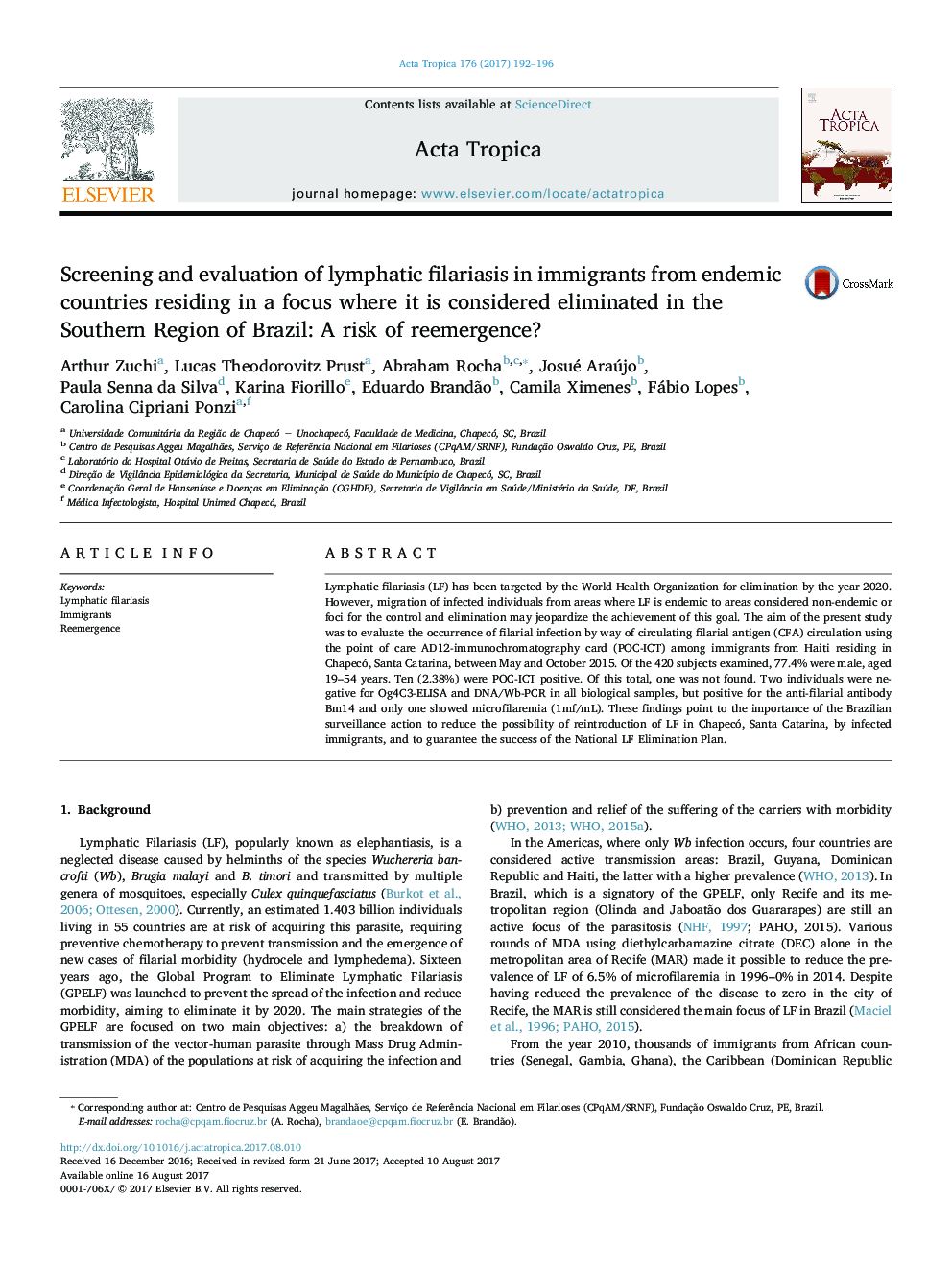| کد مقاله | کد نشریه | سال انتشار | مقاله انگلیسی | نسخه تمام متن |
|---|---|---|---|---|
| 5671031 | 1592748 | 2017 | 5 صفحه PDF | دانلود رایگان |
- Immigration of people from endemic areas of lymphatic filariasis to non-endemic areas or endemic areas in the past, in which transmission was eliminated, has contributed to the introduction and reintroduction of parasitic diseases.
- Of the individuals examined, 10 (2.38%) had positive POC-ICT and, of these, 7 were male and 3 female, with a mean age of approximately 32 years.
- Of the 10 individuals diagnosed as positive for POC-ICT, only one was not located to perform venous blood and urine collection for confirmation of Wb infection through complementary tests.
- All other individuals were positive for POC-ICT and CFA Og4C3-ELISA, antifilarial Bm14 antibody and DNA/Wb-PCR detection in blood, serum and urine, except for one individual, who tested negative for anti-filarial Bm14 antibody.
- The implementation of local public health policies aiming to identify infected immigrants is crucial for maintaining LF-free areas in Brazil. Efforts should be made to develop a cooperative international surveillance program between countries that have successfully eliminated LF and countries that are in the process of control and elimination of the disease.
Lymphatic filariasis (LF) has been targeted by the World Health Organization for elimination by the year 2020. However, migration of infected individuals from areas where LF is endemic to areas considered non-endemic or foci for the control and elimination may jeopardize the achievement of this goal. The aim of the present study was to evaluate the occurrence of filarial infection by way of circulating filarial antigen (CFA) circulation using the point of care AD12-immunochromatography card (POC-ICT) among immigrants from Haiti residing in Chapecó, Santa Catarina, between May and October 2015. Of the 420 subjects examined, 77.4% were male, aged 19-54 years. Ten (2.38%) were POC-ICT positive. Of this total, one was not found. Two individuals were negative for Og4C3-ELISA and DNA/Wb-PCR in all biological samples, but positive for the anti-filarial antibody Bm14 and only one showed microfilaremia (1mf/mL). These findings point to the importance of the Brazilian surveillance action to reduce the possibility of reintroduction of LF in Chapecó, Santa Catarina, by infected immigrants, and to guarantee the success of the National LF Elimination Plan.
To evaluate the occurrence of filarial infection among Haitian immigrants resident in the city of CH, SC, using the CFA for Wb conducted by POC ICT.167
Journal: Acta Tropica - Volume 176, December 2017, Pages 192-196
